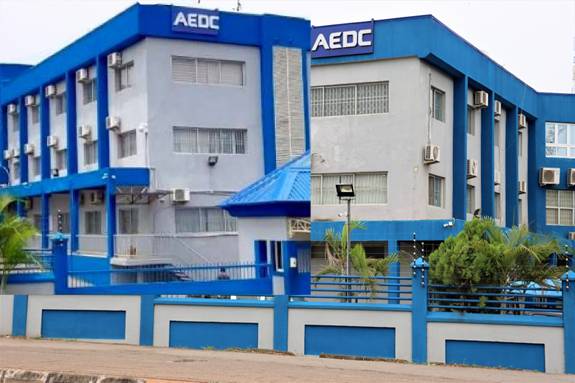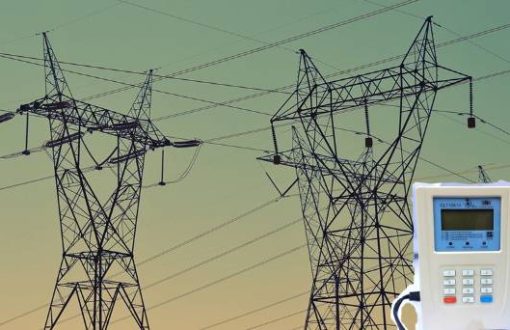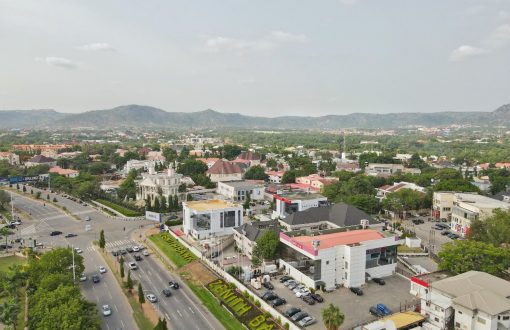How Much Does AEDC Charge Per Unit?

Electricity costs are a top concern for every Nigerian household and business, especially in Abuja and other AEDC-serviced areas. As of 2025, the Abuja Electricity Distribution Company (AEDC) has implemented different tariffs for various customer categories — primarily segmented into service bands A through E. These charges are not just numbers; they influence rent pricing, home choices, investment decisions, and even commercial real estate viability.
So, how much does AEDC charge per unit? This comprehensive guide breaks down everything you need to know about AEDC unit prices across different service bands — including Band A, Band B–E, estimated monthly costs, and tips to manage your power expenses efficiently.
AEDC Band A Charge: ₦1,000 for 4.5 Units
AEDC Band A is the most premium electricity service category, reserved for areas enjoying 20–24 hours of daily power supply. These locations often include high-end residential estates, commercial zones, and critical infrastructure areas.
According to the latest tariff structure:
- ₦1,000 = 4.5 units
- 1 unit ≈ ₦222.22 (rounded to ₦225/unit by most vendors)
This pricing has been a major talking point across Abuja and beyond. You’ve already covered it in detail in your post Band A Electricity Tariff: All You Need to Know 2025, where you broke down how ₦150,000 per month may be required to power a Band A household.
But what about other bands?
AEDC Charges for Band B, C, D, and E in 2025

AEDC’s multi-band tariff system segments customers based on average daily supply:
- Band B: 16–20 hours
- Band C: 12–16 hours
- Band D: 8–12 hours
- Band E: 4–8 hours
Each band pays a different rate per kilowatt-hour (unit). Below is the estimated AEDC charge per unit as of Q2 2025:
| Band | Supply Hours/Day | Estimated Unit Cost (₦/kWh) |
| Band A | 20–24 hrs | ₦225 |
| Band B | 16–20 hrs | ₦95 – ₦100 |
| Band C | 12–16 hrs | ₦73 – ₦85 |
| Band D | 8–12 hrs | ₦55 – ₦68 |
| Band E | 4–8 hrs | ₦49 – ₦60 |
Note: These prices vary slightly depending on feeder performance and actual supply hours.
Monthly Electricity Cost Estimate by Band
Here’s a practical look at monthly electricity expenses based on a standard household using 22.5 units per day (common in mid to high-income homes).
| Band | Daily Cost (₦) | Monthly Cost (₦) |
| Band A | ₦5,062.50 | ₦151,875 |
| Band B | ₦2,250 | ₦67,500 |
| Band C | ₦1,800 | ₦54,000 |
| Band D | ₦1,350 | ₦40,500 |
| Band E | ₦1,125 | ₦33,750 |
This cost variance makes it clear: your electricity band classification can double or triple your monthly utility budget.
How to Know Your AEDC Band Classification
If you’re unsure of which band you’re in, here’s how you can find out:
- Check your prepaid/postpaid bill — It usually states the band.
- Log in to AEDC’s Customer Portal — Most customer profiles display band information.
- Contact AEDC Support — Use their verified contact lines or social media pages to inquire.
- Ask your Estate/Facility Manager — If you live in a gated community, the management likely knows the assigned band.
Being aware of your band helps you budget accurately — and file complaints when you don’t receive the promised hours.
What Determines AEDC Unit Pricing?
The pricing of electricity units by the Abuja Electricity Distribution Company (AEDC) is influenced by a variety of factors. These factors work together to determine the final cost per unit of electricity for consumers. Understanding the mechanisms behind AEDC’s unit pricing can help consumers grasp why their electricity rates fluctuate and how these rates are structured. Several core elements, including electricity supply hours, government regulations, feeder line quality, and service location, play a significant role in influencing AEDC’s pricing structure.
1. Electricity Supply Hours
One of the most important factors influencing the unit pricing of electricity is the consistency and duration of the supply. AEDC’s pricing model is structured to reflect the amount of power provided to the consumer, and how often that power is supplied. Areas that enjoy more consistent and stable electricity supply tend to face higher charges per unit.
This is because the more regular the supply, the greater the operational cost involved in maintaining the distribution network. AEDC must ensure that the infrastructure is continuously operational, which incurs additional costs for maintaining power plants, transformers, and transmission lines. Areas in higher service bands, such as Band A, typically experience this reliable service, which is reflected in their higher tariff rates. Conversely, areas with inconsistent or irregular power supply may face lower rates as the utility needs to compensate for the irregularity in delivery.
2. Government Regulations
In Nigeria, electricity tariffs are heavily regulated by the Nigerian Electricity Regulatory Commission (NERC). NERC plays a crucial role in determining the framework under which electricity pricing is set for the entire country, including AEDC’s pricing. All tariff structures are approved and monitored by NERC, which ensures they align with national standards.
NERC regularly reviews and updates the tariff structure to account for fluctuations in external factors, such as inflation, fuel prices, and subsidy adjustments. For example, if the cost of natural gas, which is a primary fuel source for power generation, increases, the government may approve tariff hikes to offset these rising costs. Similarly, changes in government policies regarding subsidies for electricity generation or transmission can also impact the price consumers pay. Such regulatory changes are implemented by NERC, and AEDC is required to adjust its unit pricing in compliance.
3. Feeder Line Quality
Another important determinant of AEDC’s unit pricing is the quality and performance of the feeder line that supplies electricity to consumers. In AEDC’s distribution network, feeder lines are the primary pathways through which electricity is delivered from substations to homes and businesses. The reliability and capacity of these lines can vary significantly across different neighborhoods or estates.
Consumers connected to higher-performing feeder lines, which experience fewer outages, more consistent voltage levels, and overall better uptime, may be charged higher rates compared to those on underperforming feeder lines. The underlying reason for this difference is that maintaining and upgrading high-performing feeder lines often requires higher operational costs for AEDC. In contrast, feeders that face frequent disruptions or require extensive repairs are typically associated with lower operational costs, which can influence the tariff.
This means that even within the same estate or neighborhood, some customers may pay slightly more or less for electricity, depending on the quality of their specific connection to AEDC’s grid.
4. Service Location
Tariffs can slightly vary across cities or zones (Abuja, Kogi, Niger, and Nasarawa — all AEDC regions) due to logistical costs and infrastructure availability.
Can You Be Overbilled by AEDC?
Yes — and it happens more than you’d expect. Here are some scenarios:
- Estimated billing (postpaid customers) often leads to overcharges.
- Prepaid customers may see faster-than-usual unit depletion.
- Wrong band classification — You may be charged at Band A even if you don’t get 20 hours of supply.
If you’re being overbilled or wrongly classified:
- File a complaint via AEDC’s official channels
- Request a supply audit or meter test
- Keep photographic evidence of meter readings and power downtime
Tips to Manage Your AEDC Electricity Cost
If you’re spending too much on electricity, try these practical energy-saving hacks:
Switch to Inverter-Grade Appliances
Inverter ACs, fridges, and TVs consume less electricity while delivering the same output.
Use Solar Power as Backup
Instead of using costly Band A electricity for everything, install a solar-inverter hybrid system for essentials like lighting and charging.
Optimize Usage Hours
Operate heavy appliances (like irons, water heaters, and washing machines) during off-peak hours if you’re on a time-sensitive meter.
Monitor Daily Unit Use
Track how many units your household uses each day to identify consumption patterns — and adjust accordingly.
How This Affects Real Estate in Abuja
Understanding AEDC charges is essential for anyone involved in Abuja real estate — whether you’re a:
- Landlord setting rent
- Tenant budgeting utilities
- Investor analyzing returns
- Developer planning estate electrification
Key Insights:
- Band A properties attract premium rent but may have higher utility complaints if expectations aren’t met.
- Band C/D areas strike a balance between cost and supply — often ideal for middle-income housing developments.
- Tenants are now more sensitive to power band classification and ask questions during property inspections.
If you’re a real estate agent, always disclose power band and average AEDC cost when showing homes or commercial spaces. It builds trust — and saves both parties future stress.
Final Thoughts
The question, “How much does AEDC charge per unit?”, goes beyond numbers — it’s tied to quality of life, property value, and household affordability. Whether you’re on Band A paying ₦225/unit or on Band D paying ₦60/unit, understanding your tariff helps you plan better and avoid unpleasant surprises.
If you’ve been bumped to Band A unexpectedly, read the full breakdown here: Band A Electricity Tariff: All You Need to Know 2025


